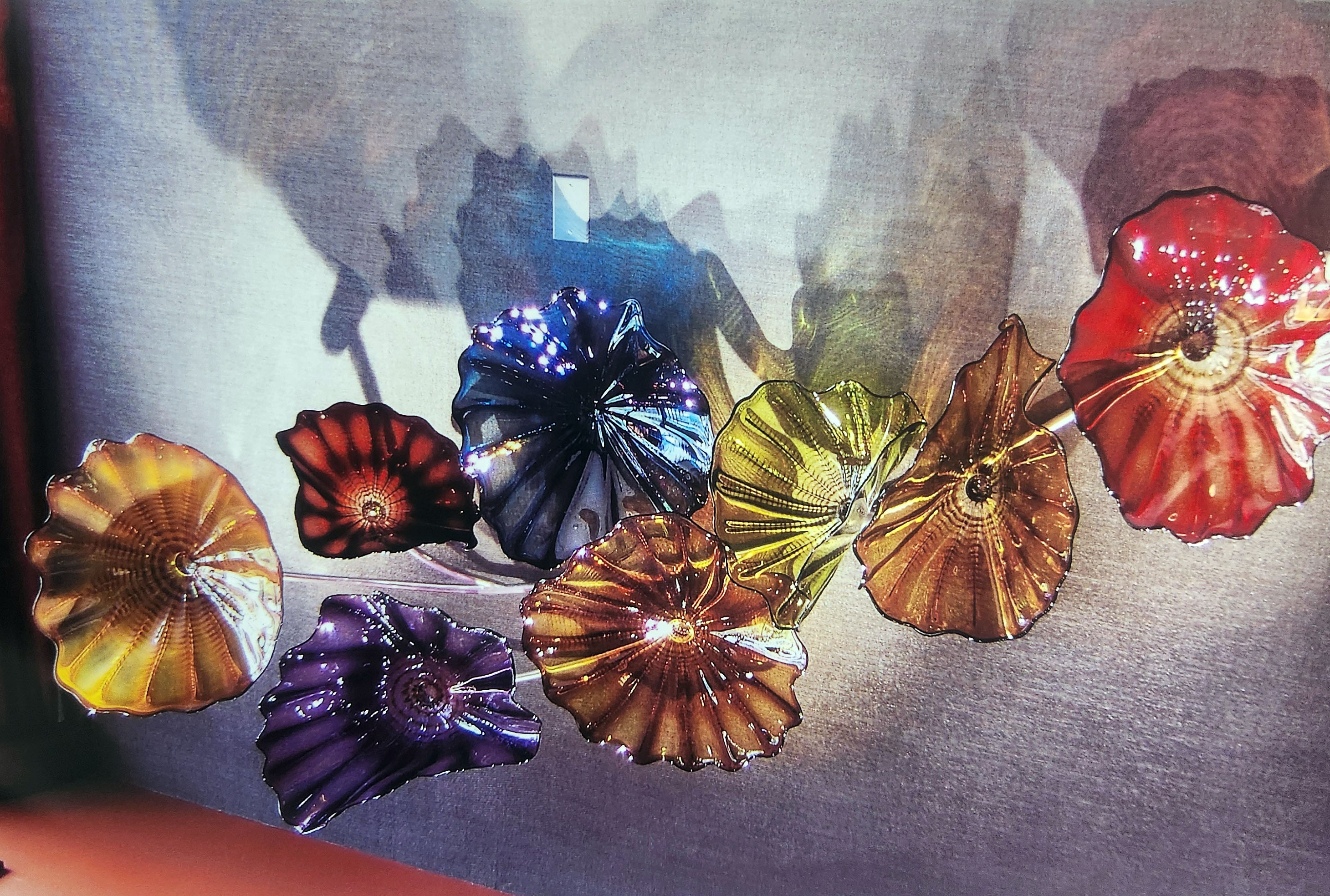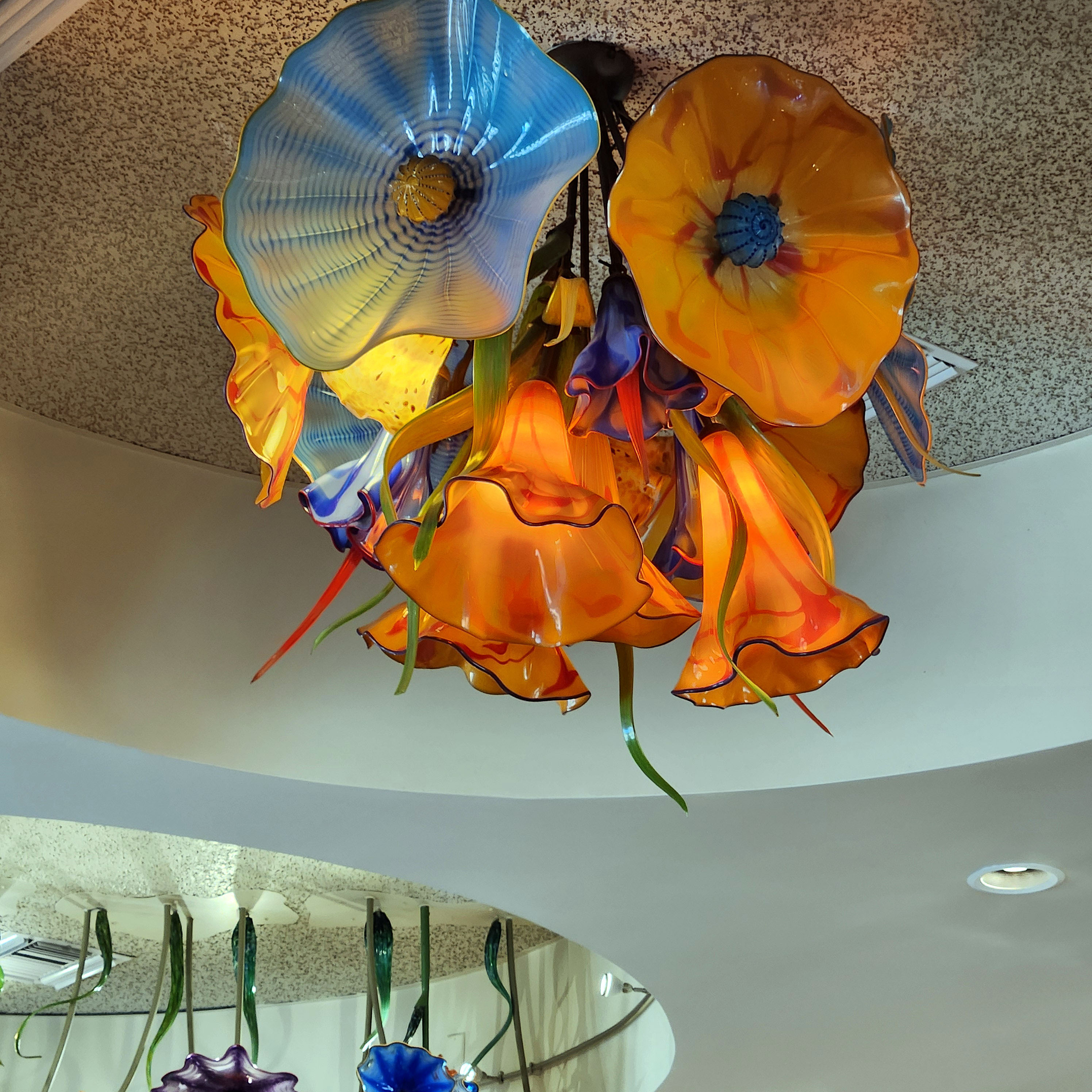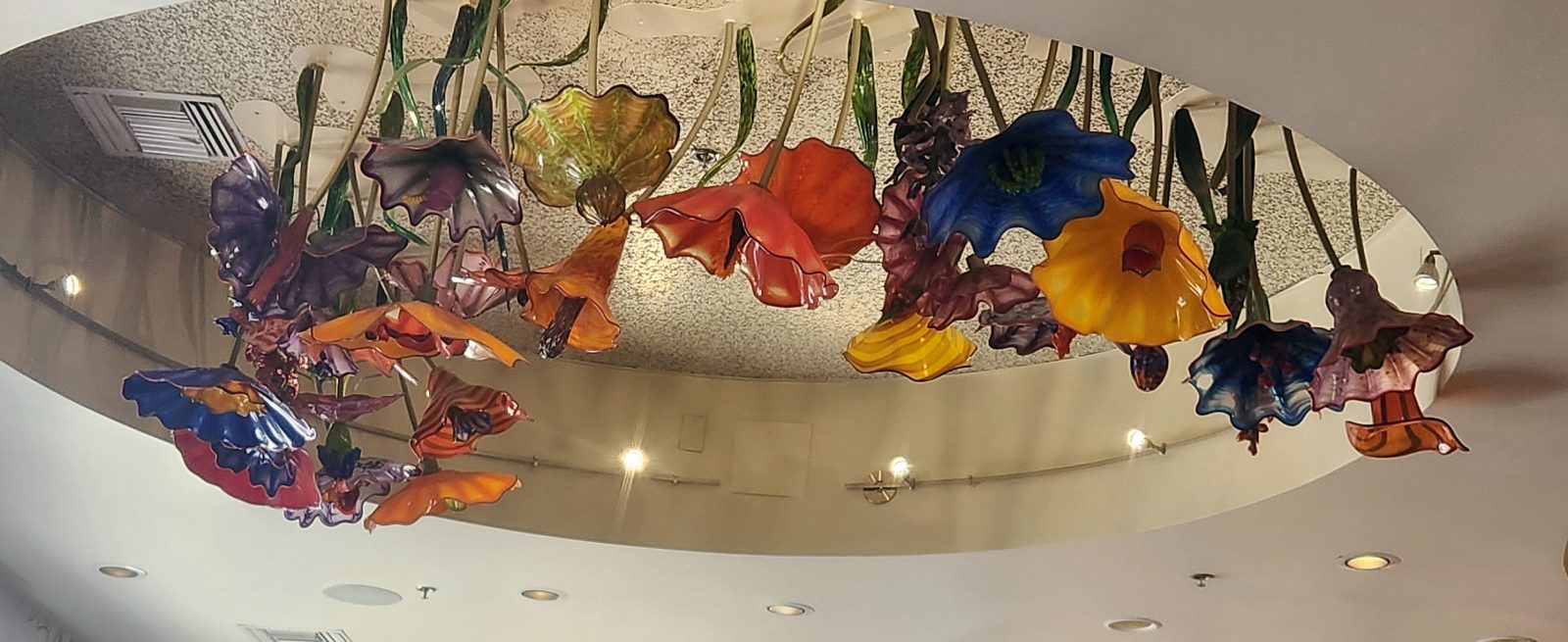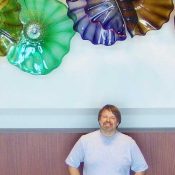Commissioning Art at Your Restaurant
6 Min Read By Newt Grover
Commissioning artwork is a collaborative journey, especially for restaurant owners. Unlike mass-produced or factory-made prints, commissioned art is a team effort from start to finish. It combines a restaurant owner’s mission with an artist’s intuition to create something unique. The restaurant owner shares a feeling or aim, then the designer builds on that with a greater theme and finally, in tandem with the artist’s craftsmanship, they bring to life a complete experience for guests. During my over 30-year career as a glass artist, I have fostered a lot of great relationships with restaurant owners.
When restaurant owners commission a work of art, it’s because they understand that customized art can create a unique dining experience. Custom art can be whimsical, intriguing, bold, or even disturbing. Guests want to enjoy a tasty and visual experience at a restaurant. Food and art satisfy that desire.
Commissioned art also shows a much stronger connection to the city and the people who live there. It’s delightful to enjoy a meal among local people in a restaurant with art made by local artists. Custom art is also just cool. Here are a few tips to help restaurant owners commission custom art for their space.
Find Out What You Like and Be True To That Work
Business owners know what they like, but often aren’t familiar with different types of art that can bring their vision to life. That’s where designers usually step in to help. My job has always been to work with, never against, good designers. The slow revolution of kinematic sculpture is entirely different than, say, the sparkling glow of stained glass, for instance.

Photos by Newt Grover
At Mastro’s, the many chandeliers I created for them, in collaboration with Don Carston, their manager, aligned with the theme of each restaurant in a subtle and unique way. I was talking to them one day and I said, “You’ve got such a cool space here. I could do something cool here.” So I drew some ideas up, and we went back and forth on price, and he took a chance on my art because he knew me. We would not have been able to find out what worked If Don did not have a good understanding of what type of art he liked.
What Feeling Are You Trying To Convey With Commissioned Art?
How do you want your guests to feel at the beginning and end of their evening? Reverse engineering a story is the best way to ensure excellent results. Before choosing an artist, it makes sense to decide on which feelings you want to evoke.
Whether you want your guests to finish with a sigh of sentimental longing or go home still talking about their experience, that goal will determine the direction your commissioned art should take. Knowing the overall feeling you’re aiming for makes it easier to decide on what type of artist you want to work with. Once the discussion begins, you’ll want to be able to convey the kind of story or overall feeling that you’re trying to create at your establishment. Fabric painters, glass artists, sculptors, and all sorts of artisans want to help business owners. They enjoy a creative challenge. By giving a simple emotional guideline, restaurant owners can clarify the right direction.
Know Your Wow and Your Secondary Pieces
Often, owners call artists, knowing they want their guests to exclaim, “Wow!” when they walk in. Seeing a unique chandelier, for instance, makes a lasting impression. They love to have something in their restaurant that nobody’s seen before. Owners want their guests to understand right away, such as from an entryway piece, that a great deal of creative consideration went into the entire experience, from food to service to design.
Guests notice how much you care. The creation of the piece, from the size to the color to even the shadows cast by the light at different times, are all the little elegant touches that convey intent. Some of the best work I’ve ever done has been after a restaurant owner challenged me to solve a design problem.
Secondary pieces are those that only hint at specific themes. They’re usually smaller and support the larger work and dining experience. Individually, they may not stand out, but collectively, they are essential to the restaurant's overall ambiance. By discussing elements like lighting and angles beforehand, artists can aim for the ambiance they want.
Don’t Under Budget for Aesthetics
I can’t express how vital a well-thought-out design budget is. The size of the space and how it’s typically used, the height of the ceiling, the tones used in the overall design scheme, and the blending effect of the combined colors are just a few of the factors taken into consideration before the artist even begins. The budget needs to reflect that. When I worked on pieces for Wildflower Bread Company, they knew art was critical to their design, so they considered it an essential part of their budget.

Photos by Newt Grover
The budget for design must support the overall quality of the restaurant. A fancy steakhouse, such as Mastro’s City Hall in Scottsdale, Arizona, will have a significantly higher design budget. They had a massive art and design budget, but their commitment to their food and space meant they were able to pay for that renovation in under two years. Deciding on all these aspects is the work of the owner, artist, and designer. Cost is always one of the factors that professionals respect. The collaboration involves a back-and-forth between all parties to determine which colors, textures, degrees, and nuances will come together within their budget to make a lasting impression on guests.
Your Art Should Complement the Food, Not Overshadow It
Customized artwork creates a unique consistency in restaurant design. That consistency enhances the real star of the show, the food. No matter how incredible art may be, the job of restaurant art is to support the star. Modern restaurant designers utilize a multifaceted approach. They combine multiple types of artwork to provide the eye with a pleasurable place to rest, a space to dwell in for the duration of a guest’s visit. However, the star of the show is always the food. When working alongside restaurant designers, I’ve seen incredible combinations of artwork, such as sculptures and stained glass, alongside paintings, which, when gathered together, somehow seamlessly transport each guest into a memorable experience. However, the design should never outshine the meals. Often, less is more. A heavy chandelier in an entryway, like the one I designed at Mastro’s City Hall, might only occupy a quarter of the visual space, but it immediately signals to guests that the venue is one worth experiencing and that the food is going to be amazing.
Foster Personal Relationships With Artists
Personal relationships are essential. I met Louis Basile before he started Wildflower Bread Company. While he was getting the business off the ground, my wife sent him a letter sharing that we were no longer doing neon signs and would be focusing on glass work only. It was just a basic sales letter. But because he knew me, he came back and asked, “Well, what can you do for me?” so we came up with some concepts. I think I worked with him for almost ten years, as every year or so, he'd open a new restaurant, and we’d do another piece or two or three. What I enjoyed about Louis is that I had a lot of carte blanche. He would point to different areas and describe a bit about his goals, and then I would get to work drawing sketches and presenting ideas. It was a lot of fun. We would never have had the chance to work together if we hadn’t tried to foster a relationship between the restaurant owner and the artist.
Trust the Artists You Hire, But Make Sure They are Adaptable
Ongoing relationships naturally build trust. If you’re a serious craftsman, then people recognize that and begin to trust you more. Some of the best work I’ve ever done has been after a restaurant owner or a homeowner just said, “Have at it.” Building a track record is crucial in this industry. Business leaders will work with the same people repeatedly if they can trust them. One of the very first things I did was a super cool piece around 25 years ago for an animal-themed nightclub. It was a chandelier made out of what looked like horns. The owner’s idea inspired my work, not the other way around. It’s egotistical for an artist to try to create a piece of art that only suits them. The artist’s goal is to support the restaurant’s goals. Hire an artist who understands they are working for you, but trust them enough to let their creativity shine.
Business leaders who commission art value communication and relationships. That translates into a better, much cooler guest experience. As an artist, I appreciate business owners who are humble enough to ask for input and trust me to support their goals. Most restaurant owners are more focused on food than anything else, as they should be, because design is not their forte. When a restaurant owner is committed to communication, relationships, and customized artwork, it’s because they’ve already created a superb menu. Combining all that energy results in an experience that sets them above and beyond their competitors.


